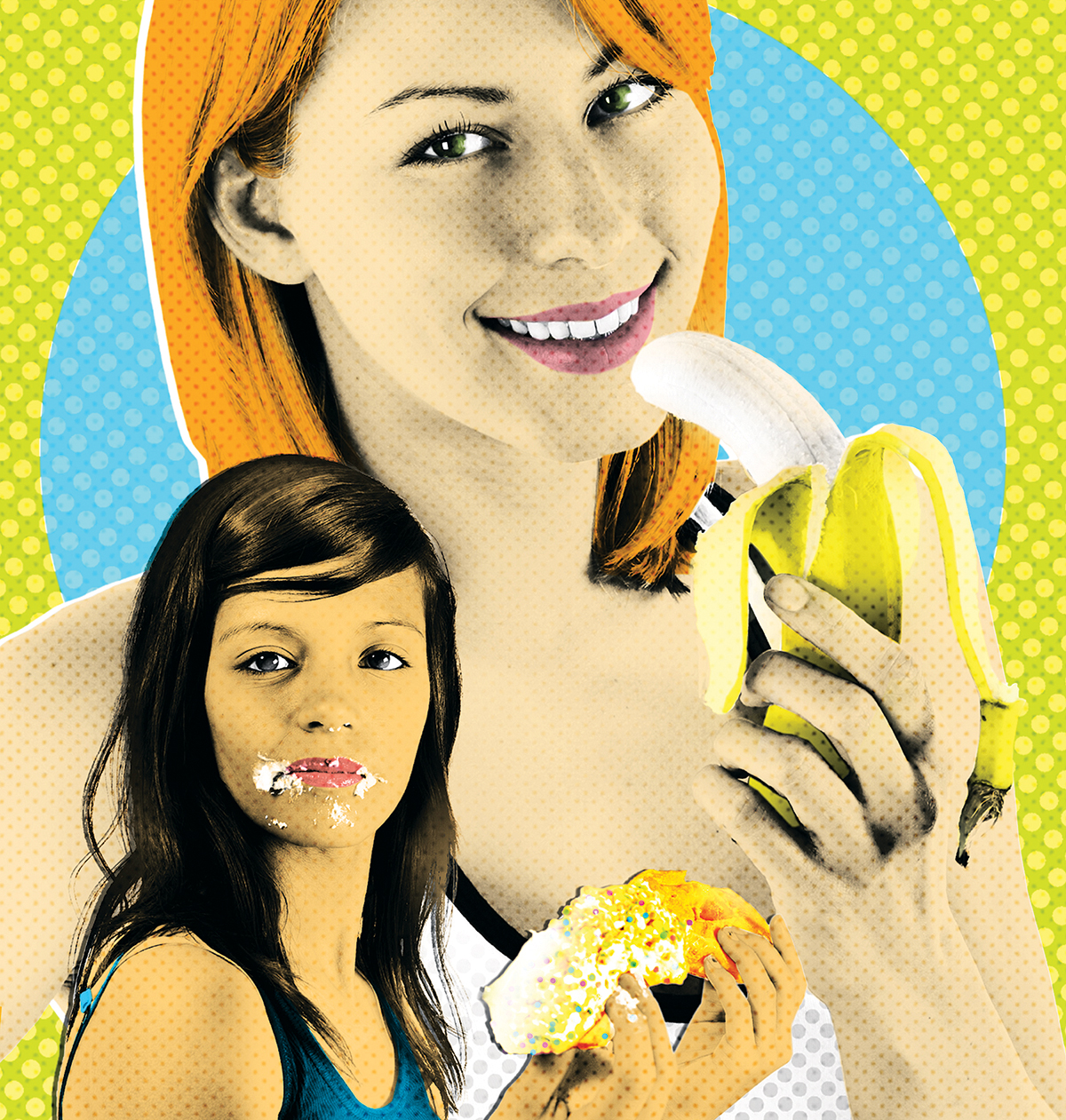Fitness: Body by Boston
EAT RIGHT

Illustration by Resident Alien
You know better than to go on a crash diet. But even smart folks want to believe in miracle methods to shrink the waistline. Truth is, they don’t exist. So when you do commit to shedding pounds, set realistic goals and pick a plan that’s right for you (hint: it won’t be a fad diet), and you’ll end up with results you can see.
Think Thin
How your ideas of good and bad foods can make you fat.
By Ashley Wood
Superfruits, antioxidant vegetables, evil pastries—are we at the supermarket or in a comic book? Forget which foods are the heroes and which are the bad guys. Turns out that the very notion of good versus evil at the grocery store could be making us chunky.
[sidebar]During a 2011 study conducted by three researchers at Tufts University’s Friedman School of Nutrition Science and Policy, 50 college-age women were instructed to eat either a doughnut or a banana, and then asked to complete a series of questionnaires that evaluated their mood and body image. The two foods actually have identical caloric makeups, but as you might expect, the banana eaters reported feeling cheery, while the doughnut eaters were left scrutinizing their waistlines. “People get this mindset that there are good foods and bad foods, and there really aren’t,” says Robin Kanarek, coauthor of the study.
In another study, conducted by Emily Fox Kales, a student of Kanarek, those who ate a perceived “bad” food were more likely to binge than those who ate “good” stuff. People’s preconceived notions influence “their behavior a lot more than the actual calorie content of a food,” Kanarek says. “Once they already feel bad about themselves, they think, Oh well, might as well finish the whole bag of candy.”
It’s said that you are what you eat, but the truth is more like you are what you think you eat. Just don’t go thinking a Snickers bar is Kashi.
Casual to Hard-Core Diets
Atkins
In a nutshell: Meat and potatoes, hold the potatoes.
How it works: Replacing carbs with protein and fiber forces the body to metabolize fat, which causes weight loss with quick initial results.
Sample meal: For dinner, steak grilled with green bell peppers and onions.
Avoid: Sugar, bread, and pasta.
Criticisms: Lacks focus on exercise; a long-term diet rich in saturated fats may contribute to heart disease.
Duration Forever.
Paleo
In a nutshell: If it isn’t found in nature, don’t eat it.
How it works: Eating only whole, unprocessed foods eliminates sugar, salt, and excessive fat, which are staples of the typical American diet.
Sample meal: For breakfast, three eggs from cage-free chickens with mushrooms, and a side of bacon made from free-range animals.
Avoid: Anything processed (plus sugar, dairy, and grains).
Criticisms: Free-range meats and organic foods can get spendy.
Duration: Forever.
Juice Cleanse
In a nutshell: Detox and drop weight by not eating.
How it works: Abstaining from solid food allows the body to expel toxins, recover from the relentless stress of digestion, and shed a few pounds.
Sample meal: Filtered water, cashew nut milk, and vanilla.
Avoid: Anything that’s not in the juice.
Criticisms: It comes with a panoply of side effects, including fainting, dizziness, arrhythmia, and vomiting—plus the weight often comes back quickly.
Duration Typically 3 to 5 days.
HCG
In a nutshell: Weight-loss results you can inject.
How it works: Daily injections of human chorionic gonadotropin (a hormone pregnant women release)and a daily limit of 500 calories trigger the brain to burn fat.
Sample meal: For lunch, 3.5 ounces of tilapia with a side of beet greens.
Avoid: Dairy, carbs, and sugar.
Criticisms: The near-starvation diet produces short-term weight loss, but isn’t sustainable over the long term.
Duration: 23- or 40-day regimens.